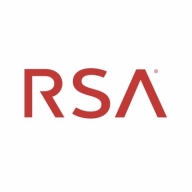

LogRhythm SIEM and RSA enVision are strong contenders in the SIEM market. LogRhythm SIEM has an edge in customer satisfaction, while RSA enVision is noted for its deeper technical features.
Features: LogRhythm SIEM is known for real-time monitoring, extensive logs, and advanced correlation capabilities. RSA enVision offers detailed reporting, compliance support, and in-depth analytics.
Room for Improvement: LogRhythm SIEM needs better integration with third-party tools, more customization options, and enhanced reporting. RSA enVision requires simplification, easier use, and a more intuitive interface.
Ease of Deployment and Customer Service: LogRhythm SIEM features smoother deployment and responsive customer service. RSA enVision's deployment is complex and time-consuming, with reliable but slower customer service.
Pricing and ROI: LogRhythm SIEM has reasonable setup costs and strong ROI. RSA enVision is more expensive but offers a comprehensive feature set that justifies the cost.
| Product | Market Share (%) |
|---|---|
| LogRhythm SIEM | 2.9% |
| RSA enVision | 0.5% |
| Other | 96.6% |

| Company Size | Count |
|---|---|
| Small Business | 38 |
| Midsize Enterprise | 38 |
| Large Enterprise | 83 |
LogRhythm SIEM Platform is an award-winning platform in security analytics. With more than 4,000 customers globally, LogRhythm SIEM is an integrated platform that helps security operations teams protect critical infrastructure and information from emerging cyberthreats. Ultimately, LogRhythm SIEM is an integrated set of modules that contribute to the security team’s fundamental mission: rapid threat monitoring, threat detection, threat investigation, and threat neutralization. LogRhythm SIEM is for organizations that require an on-premises solution and offers:
● Streamlined workflow
● Secure data access
● Real-time visibility
● A unified user experience
● Management customization
Security information and event management (SIEM) solutions have been evolving for over a decade; their core functionality still acts as the most effective foundation for any organization’s technology stack. A SIEM solution enables an organization to centrally collect data across its entire network environment to gain real-time visibility into activity that may pose a risk to the organization. SIEM technology addresses threats before they become significant financial risks while simultaneously helping better manage an organization’s assets.
LogRhythm SIEM has many key features and capabilities, including:
● High-Performance Log Management: LogRhythm SIEM offers structured and unstructured search capabilities which allows users to swiftly search across an organization’s vast data to easily find answers, identify IT and security issues, and troubleshoot issues. Users can efficiently process and index terabytes of log data daily.
● Network and Endpoint Monitoring: Forensic sensors allow users to gain deep visibility into endpoint and network activity. Users can see behavioral anomalies and better respond to incidents.
● SmartResponse™ Automation: LogRhythm SIEM allows users to centrally execute pre-staged actions that automate incident investigatory tasks and responses.
● Automated Machine Analytics: LogRhythm SIEM's AI Engine continuously analyzes all collected security incidents and forensic data. Security teams are delivered precise, real-time intelligence about risk-prioritized threats.
● Case and Security Incident Management: LogRhythm SIEM offers an integrated workflow so that threats don’t slip through the cracks. Collaboration tools help centrally manage and track investigations.
● User and entity behavior analytics (UEBA): Embedded deterministic UEBA monitoring helps protect against insider threats.
● Security orchestration, automation, and response (SOAR): LogRhythm SIEM includes our embedded SOAR solution to increase efficiency and higher-quality incident response with low mean time to response (MTTR).
Benefits to Using LogRhythm SIEM
● The platform offers great value to security and IT operations. Users have the ability to map their security and IT operations to existing frameworks such as NIST and MITRE ATT&CK.
● The platform offers broad integration across security and IT vendors: Users benefit from support for integration with hundreds of security and IT solutions. In turn, this further extends SIEM capabilities and data collection.
● The platform provides compliance adherence, enforcement, and reporting: The prebuilt compliance modules automatically detect violations as they occur and remove the burden of manually reviewing audit logs.
Reviews from Real Users
LogRhythm SIEM stands out among its competitors for a number of reasons. Two major ones are its ability to be customized and its quick performance of queries.
Jason G., a senior cybersecurity engineer, writes, "I have found the Advanced Intelligence Engine has provided the most value to us because we can customize alarms based on our requirements and have created hundreds of alarms that notify different people for different scenarios."
Andy W., principal consultant at ITSEC Asia, notes, “LogRhythm SIEM covers all our primary security analysis needs. It makes it easier for us to analyze threats and improves our response times. It's a versatile platform that performs queries fast compared to other SIEM solutions.”
RSA enVision is a comprehensive security information and event management (SIEM) solution offered by RSA, a leading provider of cybersecurity solutions. It enables organizations to collect, analyze, and manage security event data from various sources, providing real-time visibility into their IT infrastructure. With RSA enVision, organizations can proactively detect and respond to security incidents, ensuring the protection of critical assets and sensitive data.
The solution offers a wide range of features, including log management, event correlation, threat intelligence, and compliance reporting. One of the key strengths of RSA enVision is its ability to collect and normalize data from diverse sources, such as network devices, servers, applications, and databases. This allows organizations to gain a holistic view of their security posture and identify potential threats or vulnerabilities.
The event correlation capabilities of RSA enVision enable the detection of complex attack patterns and the identification of potential security incidents. By analyzing events in real-time and correlating them with historical data, the solution can provide actionable insights and alerts to security teams, enabling them to respond quickly and effectively. RSA enVision also offers advanced threat intelligence capabilities, leveraging machine learning and behavioral analytics to identify anomalous activities and potential indicators of compromise. This helps organizations stay ahead of emerging threats and proactively mitigate risks.
RSA enVision provides comprehensive compliance reporting capabilities, helping organizations meet regulatory requirements and demonstrate adherence to industry standards. The solution offers pre-built compliance reports for various regulations, such as PCI DSS, HIPAA, and GDPR, simplifying the audit process and reducing compliance-related costs. In summary, RSA enVision is a powerful SIEM solution that enables organizations to effectively manage their security events, detect and respond to threats, and meet compliance requirements.
With its robust features and capabilities, it provides organizations with the necessary tools to enhance their cybersecurity posture and protect their critical assets.
We monitor all Security Information and Event Management (SIEM) reviews to prevent fraudulent reviews and keep review quality high. We do not post reviews by company employees or direct competitors. We validate each review for authenticity via cross-reference with LinkedIn, and personal follow-up with the reviewer when necessary.